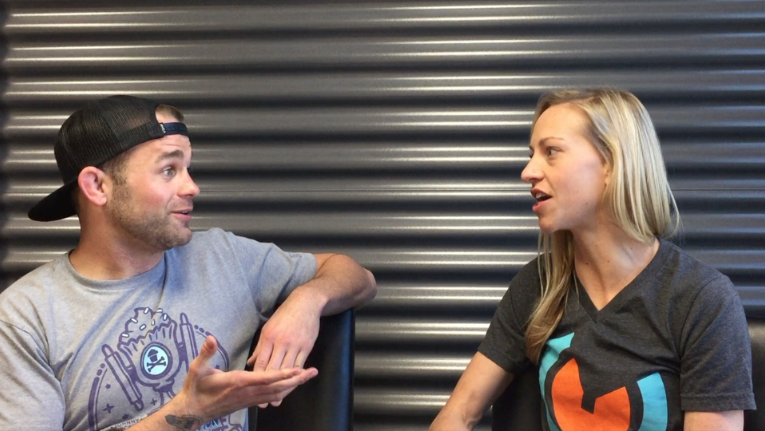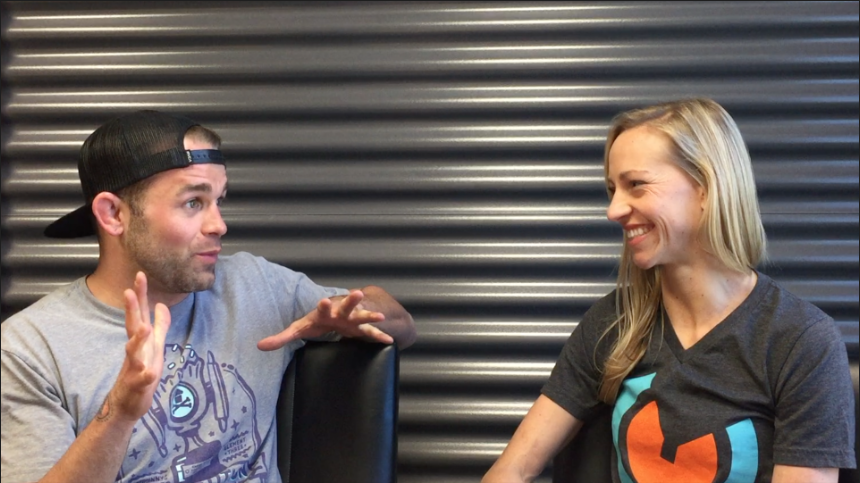Let's GDD That Campaign Funnel
Luke Summerfield, Program Manager and GDD guru at HubSpot, shared with Campaign Creators how to apply Growth-Driven Design tactics to your campaign...
I know what I am looking for, and would like to chat.
A team of data-driven marketers obsessed with generating revenue for our clients.
Because the proof is in the pudding.
At Campaign Creators we live by three principles: Autonomy, Mastery, Purpose.

While Growth-Driven Design is primarily thought of in the context of website design, its principles can and should be applied to all your marketing activities. Luke Summerfield, GDD fanatic from HubSpot, shared with Campaign Creators four of these principles you should be applying across your marketing activities.
This blog post is part of “Your Definitive Guide to Lead Generation” blog series.
Figure out what your user is trying to accomplish.
Determine what the friction is that is stopping them from being able to accomplish that goal.
Brainstorm, and then prioritize, all the ways you can reduce that friction in order help your user accomplish their goal.
Test whether what you do to eliminate friction has the effect you intended.
Tammy: Hey guys, Tammy here from Campaign Creators. I have a special guest here, Luke Summerfield. He is Program Manager and Growth Driven Design Evangelist. He works at HubSpot and he is going to share with us what he is most passionate about, GDD. I have a few questions for you.
Luke:Sure.
Tammy: Thank you for coming.
Luke: Yep.
Tammy: First of all, growth driven design is primarily thought of in the context of web design, right? How do you see the philosophy behind it being applied to other marketing activities or channels?
Luke: Yeah. The growth driven design is a methodology we talk about in the context of web design, but really when you boil down the principles, the framework itself, it's something that can be applied to anything, your marketing, even your personal life. Maybe some of you can take notes for your personal life. There's definitely things that you can translate over. I think one of the first things to understand is, it goes to this idea of the jobs that be done framework, which there's this guy Clay Christensen, who has written a bunch of really good books. One of the things he talks about is at the end of the day someone's coming to your business, to your company, to hire your product to do a job for it. It's like the idea I go to Home Depot to buy a shovel, not because I want a shovel, but I want the hole that I can use to dig that.
One of the things that we have to do, whether it's growth driven design with your website and them coming to your website, whether it's them downloading something, we have to look through the world through their eyes and take a few steps back and ask ourselves, "What's the job that they are essentially hiring us" ... Hiring if it's a download or whatever it is. What are they hiring us to do? The interesting thing is that that starts allowing you to think about things through a little bit different lens. Is a shovel the best thing to dig a hole, if they're trying to get a hole? Maybe they need a backhoe or they need a Bobcat or something bigger.
That's step one. That's the around the jobs to be done framework. Here's where the interesting thing comes in. That's what they're trying to accomplish. Now, when they come to your website, when they come to, they land on a landing page, they see some content offer, right? They're trying to get that job done by grabbing that piece, that item. Only a certain number of people are ended up converting on it, and a number don't. Then some questions come up around, okay, from the user's perspective, what's preventing them from capturing that value? Is it the right offer? Are they confused about what the offer is? There's all these different questions that we can have. Step one is figure out what are they trying to accomplish.
Step two is what's the friction, or the problems or the challenges that they're running into that's stopping them from being able to accomplish that. Once you have those questions, you can go into another piece of this, which is the fact that we could sit here all day and debate and get ideas. "Oh, we should do this, oh this looks pretty." We probably all been in that scenario where you have someone who is your boss who thinks one thing, and then someone else thinks another thing. It's always like a big argument.
The reality is is that, this is kind of like principle number two, is that none of us know the exact answer. The only people that know the answer are your users who are coming to your site, to your landing page, reading through your e-book. Those people have the answers of what's preventing them. Now, they might not come out and tell you, and that's why we have to put our researcher hat one and do things like user research. Do things, whether that be qualitative, quantitative or observational, to start digging up what the answer to that challenge to that problem is. We kind of work like archeologists who dig and dig and dig. Eventually at some level, we find out, okay, here's what's preventing them.
They'll actually guide you on how to make improvements based off of what you find in your research. It's actually a user-driven process. Versus, a lot of times, we as a team think we need to drive the process. A lot of the times the users will tell you how to improve. That's principle two, that it's a user-driven process. Principle one is what is the job they're trying to accomplish, and let's build from there. Principle two is let's look at how the users are running into challenges, and then let them guide us on the improvements we should make. Then, principle number three, and there's many more, but principle number three is now that we know what the challenge is, how are we going to brainstorm a bunch of ideas to build things, to update the landing page, to do conversion optimization, to change the workflow emails, to whatever that is, to help them overcome that obstacle and get the job done that they're trying to hire you for.
There's million different ideas. What we need to do is we need to think of ourselves very much like investors. Many of you watching, you may be familiar with how investment works, right? We'll do a little example here. We'll test your knowledge.
Tammy: Maybe test my knowledge too.
Luke :Well, this is investment 101. Let's think about this. I'll ask you a question.
Tammy: Yeah.
Luke :We have two businesses. Business A, we put $1 in, and we get $2 out. It's an okay investment. We have Business B, we put $1 in, we get $10 out. Where are you going to put your dollars?
Tammy: Obviously in Business two.
Luke: Yeah, in Business two, Business B. It's a no brainer. As much as that's a no-brainer, we don't really think about our more precious resource, which is our time and energy. We don't think about, okay, instead of doing a little of everything, how can I laser-focus in on a thing, that lead domino, that when I knock that domino over, it's going to have a disproportionate impact on the results we want to get. When we go through this process that we talked about, principle one, principle two and now we're on principle three, we brainstorm all those different ideas based off of the research we have, and we need to prioritize them. We can't do them all, and that's okay. We list out the ideas and we're going to use a few different ranking criteria. I'll tell you what that ranking criteria is in a minute. We're going to rank those and figure out what is those high-impact, high-priority things, and really invest in knocking those out of the park. Versus, scrambling and doing a little with everything.
Tammy: You end up with a lot of maybe low-impact, even sometimes, high-effort, low-impact and waste a lot of time, avoid that.
Luke: Totally. At the end of the day, our time is our most precious resource. Whether that's you working internally at a company, or if you're hiring an agency, you're essentially working with them for their time and their expertise. Just like we are very diligent where our dollars go, we need to be very diligent about where our hours go, and take that mentality. The last thing maybe ... I know this is a long-winded explanation. I'm very long-winded, for those who have seen my stuff. The last part is once we have that game plan, we know, okay, here are the things that we have vetted out to solve that challenge we saw, to get the job done for the customer, and is a high-impact item. We need to test whether that's true or not, right? This is still an assumption, right? It's an educated guess, it's a hypothesis, but it's still an assumption.
We need to transform ourselves back to sixth grade science class and go through the scientific method and put together, here's what we think will happen. Here's how we're going to measure the success of it. Then ultimately, after you implement it, did it work how you thought? Or did your actual users, did they interact how you thought? Did they interact how you didn't think? How did it change their behavior? The reason that's important is that the more we learn about our users, the more we have a deep understanding of what they're trying to accomplish. What's working, what's not working. When we go back around and we start this cycle again, and we figure out what can we do better next time around, we're going to be that much smarter.
Over time, as you're going through this cycle, you're getting smarter and smarter and smarter. As long as you take a step back to really assess, okay, did they behave how we thought? Did it help them? Did it not? Why or why not? What does that tell us for the future as we go back through this and brainstorm new things?
Tammy: Yeah, definitely. Long-winded answer, but I think very important, all really important principles.
Thanks for watching part one of my interview with Luke from HubSpot. If you found Luke’s advice about applying GDD to marketing useful, be sure to watch Part 2 of our interview where Luke covers tangible ways you can apply GDD principles to your inbound marketing campaigns today.
Interested in enhancing your inbound strategy? Follow this free Inbound Marketing Ecosystem worksheet to create the assets necessary to start generating and converting your leads at a rate like never before.
Have you been applying GDD principles to your marketing activities? Any takeways? Tell us about it below.
(music by www.bensound.com)

Luke Summerfield, Program Manager and GDD guru at HubSpot, shared with Campaign Creators how to apply Growth-Driven Design tactics to your campaign...

As a marketer, you've tried every known lead-generating tactic known to man and then some. But leads don't necessarily convert to customers right...

In this hack, Sean shows viewers how to prioritize all the possible conversion rate optimization improvements you could make to your landing page or...